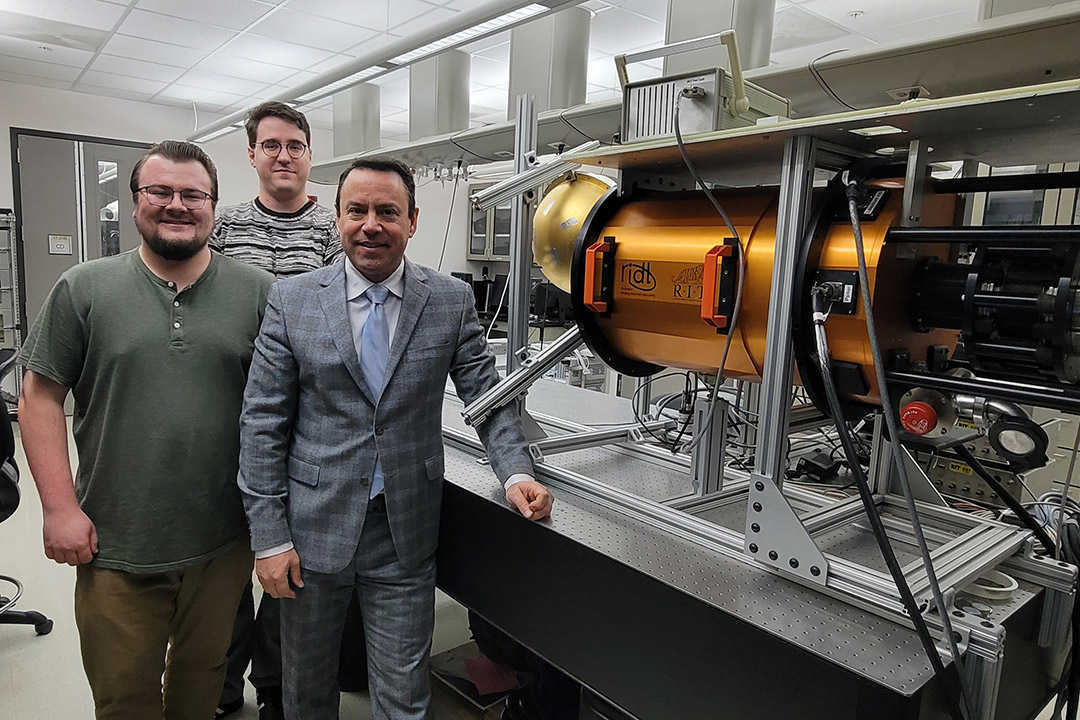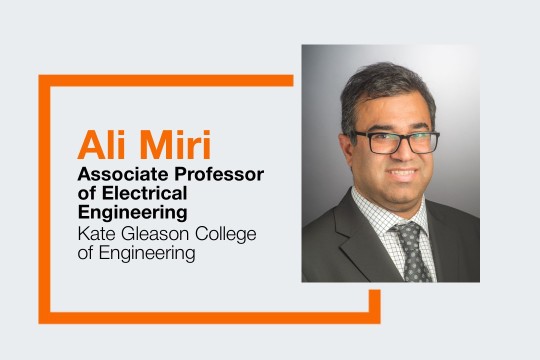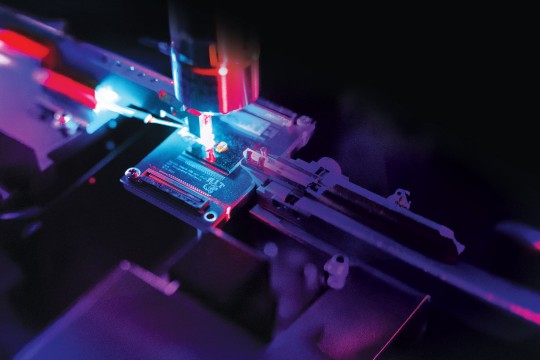RIT researchers receive NSF funding to further develop infrared detectors for astrophysics
Center for Detectors Director Don Figer to receive $315,000 in new NSF funding over the next year
Candice Fazar
The NSF will provide more than $315,000 in new funding to researchers from the Center for Detectors to continue developing infrared detectors for the next generation of ground-based telescopes. From left to right: Lab Engineer Justin Gallagher, astrophysical sciences and technology Ph.D. student Lazar Buntic, and Center for Detectors Director Don Figer.
Researchers from Rochester Institute of Technology’s Center for Detectors received new funding from the National Science Foundation to continue developing infrared detectors for the next generation of ground-based telescopes. The NSF will award Don Figer, director of RIT’s Center for Detectors and the Future Photon Initiative, more than $315,000 over the next year to continue work on a grant to provide the astronomy community with a new family of detectors that have very large formats, very low cost, and state-of-the-art performance.
The grant will fund research that will ultimately lead to the HgCdTe Extremely Large Layout Sensor Technology for Astrophysics Research (HELLSTAR) detector, which aims to be the highest pixel count infrared detector ever made for astronomy. The scientists are focused on increasing the sensitivity of the detectors, which is a remaining barrier to using these devices in low light level applications required for astronomical instruments.
Phase II of the project began in 2015, and Figer said the technology has come a long way in a short period of time.
“This project has been a big success so far despite complications from COVID-19 and delays due to the worldwide electronics shortage,” said Figer. “While much of the scientific community is in awe right now of discoveries made recently through the detectors that we helped develop for the James Webb Space Telescope and other new observatories, we’re excited to develop new detectors for the next generation of telescopes that will come online in the next several decades.”
The newly-funded research is expected to conclude in fall 2023. For more information about the project, go to the NSF website.


